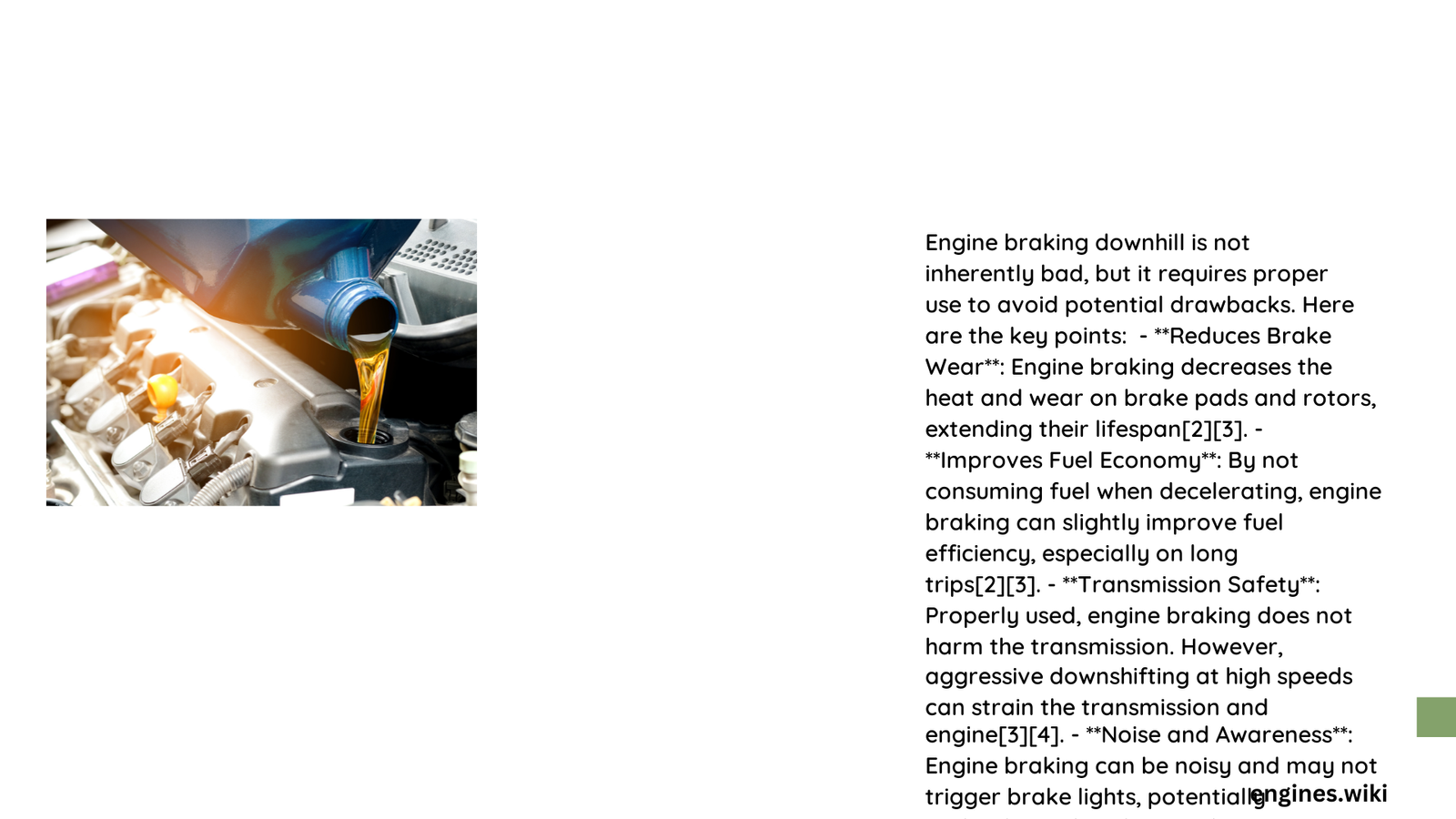Engine braking downhill is a critical driving technique that can significantly enhance vehicle control and safety when executed correctly. Contrary to common misconceptions, engine braking is not inherently bad but requires understanding its proper application, potential benefits, and limitations across different driving conditions and vehicle types.
What Makes Engine Braking Downhill Effective?
How Does Engine Braking Control Vehicle Speed?
Engine braking works by reducing the vehicle’s speed through the transmission and engine mechanism, rather than relying exclusively on brake pads. When a driver shifts to a lower gear while descending, the engine’s resistance creates a natural deceleration effect.
Key Mechanisms of Engine Braking
- Transmission Resistance: Lower gears create higher engine RPMs
- Mechanical Energy Conversion: Kinetic energy transforms into mechanical resistance
- Reduced Brake System Stress
Why Should Drivers Consider Engine Braking?
| Benefit | Impact | Performance Improvement |
|---|---|---|
| Brake Preservation | Reduces Wear | 30-50% Less Brake Pad Deterioration |
| Heat Management | Prevents Brake Fade | Maintains Consistent Braking Performance |
| Vehicle Control | Enhanced Stability | Improved Handling on Steep Descents |
What Are the Potential Risks of Improper Engine Braking?
While engine braking offers numerous advantages, incorrect implementation can lead to potential issues:
- Transmission Strain: Aggressive downshifting might cause unnecessary mechanical stress
- RPM Fluctuations: Rapid gear changes can create engine wear
- Fuel Efficiency: Constant gear manipulation might slightly reduce fuel economy
When Should Drivers Use Engine Braking?
Ideal Scenarios for Engine Braking
- Long, steep mountain descents
- Roads with significant gradient
- Vehicles with manual or semi-automatic transmissions
- Heavy load conditions
How to Perform Safe Engine Braking?
Recommended Techniques:
– Anticipate descent before reaching steep sections
– Smoothly downshift to appropriate gear
– Maintain consistent, moderate engine speed
– Avoid abrupt gear changes
– Combine with gentle brake application if necessary
Can All Vehicles Perform Engine Braking?
Different vehicle types have varying engine braking capabilities:
- Manual Transmission: Most effective
- Automatic Transmission: Depends on model and design
- Hybrid/Electric Vehicles: Unique regenerative braking systems
Expert Recommendations

Professional drivers and automotive experts generally agree that engine braking is a valuable technique when applied correctly. The key is understanding your specific vehicle’s characteristics and practicing smooth, controlled descent techniques.
Technical Insights
Modern vehicles are engineered to withstand engine braking, with transmission and engine management systems designed to handle these forces. However, excessive or aggressive engine braking can potentially cause premature wear.
Final Thoughts
Engine braking downhill is not inherently bad but requires skill, understanding, and appropriate application. Drivers should prioritize smooth technique, vehicle-specific knowledge, and safety considerations.
Pro Tips
- Practice in safe environments
- Understand your vehicle’s specific capabilities
- Regular maintenance ensures optimal performance
References:
– Society of Automotive Engineers
– National Highway Traffic Safety Administration
– Automotive Engineering Journal
